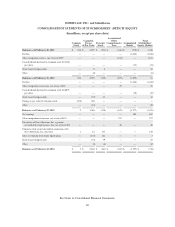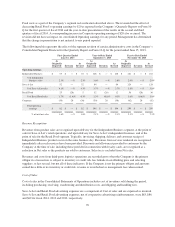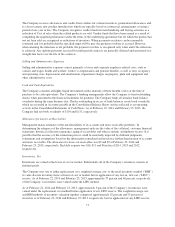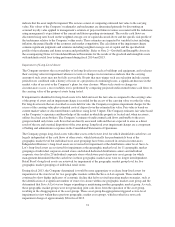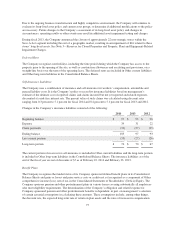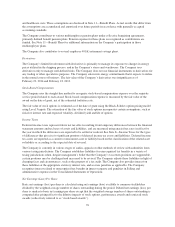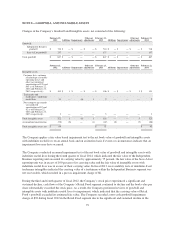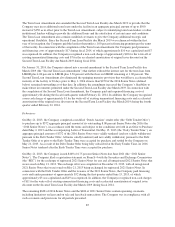Albertsons 2014 Annual Report Download - page 78
Download and view the complete annual report
Please find page 78 of the 2014 Albertsons annual report below. You can navigate through the pages in the report by either clicking on the pages listed below, or by using the keyword search tool below to find specific information within the annual report.and healthcare costs. These assumptions are disclosed in Note 11—Benefit Plans. Actual results that differ from
the assumptions are accumulated and amortized over future periods in accordance with generally accepted
accounting standards.
The Company contributes to various multiemployer pension plans under collective bargaining agreements,
primarily defined benefit pension plans. Pension expense for these plans is recognized as contributions are
funded. See Note 11—Benefit Plans for additional information on the Company’s participation in those
multiemployer plans.
The Company also contributes to several employee 401(k) retirement savings plans.
Derivatives
The Company’s limited involvement with derivatives is primarily to manage its exposure to changes in energy
prices utilized in the shipping process, and in the Company’s stores and warehouses. The Company uses
derivatives only to manage well-defined risks. The Company does not use financial instruments or derivatives for
any trading or other speculative purposes. The Company enters into energy commitments that it expects to utilize
in the normal course of business. The fair value of the Company’s derivatives was insignificant as of
February 22, 2014 and February 23, 2013.
Stock-Based Compensation
The Company uses the straight-line method to recognize stock-based compensation expense over the requisite
service period related to each award. Stock-based compensation expense is measured by the fair value of the
award on the date of grant, net of the estimated forfeiture rate.
The fair value of stock options is estimated as of the date of grant using the Black-Scholes option pricing model
using Level 3 inputs. The estimation of the fair value of stock options incorporates certain assumptions, such as
risk-free interest rate and expected volatility, dividend yield and life of options.
Income Taxes
Deferred income taxes represent future net tax effects resulting from temporary differences between the financial
statement amounts and tax bases of assets and liabilities, and are measured using enacted tax rates in effect for
the year in which the differences are expected to be settled or realized. See Note 8—Income Taxes for the types
of differences that give rise to significant portions of deferred income tax assets and liabilities. Deferred income
tax assets are reported as a current or noncurrent asset or liability based on the classification of the related asset
or liability or according to the expected date of reversal.
The Company is currently in various stages of audits, appeals or other methods of review with authorities from
various taxing jurisdictions. The Company establishes liabilities for unrecognized tax benefits in a variety of
taxing jurisdictions when, despite management’s belief that the Company’s tax return positions are supportable,
certain positions may be challenged and may need to be revised. The Company adjusts these liabilities in light of
changing facts and circumstances, such as the progress of a tax audit. The Company also provides interest on
these liabilities at the appropriate statutory interest rate, and accrues penalties as applicable. The Company
recognizes interest related to unrecognized tax benefits in interest expense and penalties in Selling and
administrative expenses in the Consolidated Statements of Operations.
Net Earnings (Loss) Per Share
Basic net earnings (loss) per share is calculated using net earnings (loss) available to common stockholders
divided by the weighted average number of shares outstanding during the period. Diluted net earnings (loss) per
share is similar to basic net earnings per share except that the weighted average number of shares outstanding is
computed after giving effect to the dilutive impacts of stock options, performance awards and restricted stock
awards (collectively referred to as “stock-based awards”).
76


